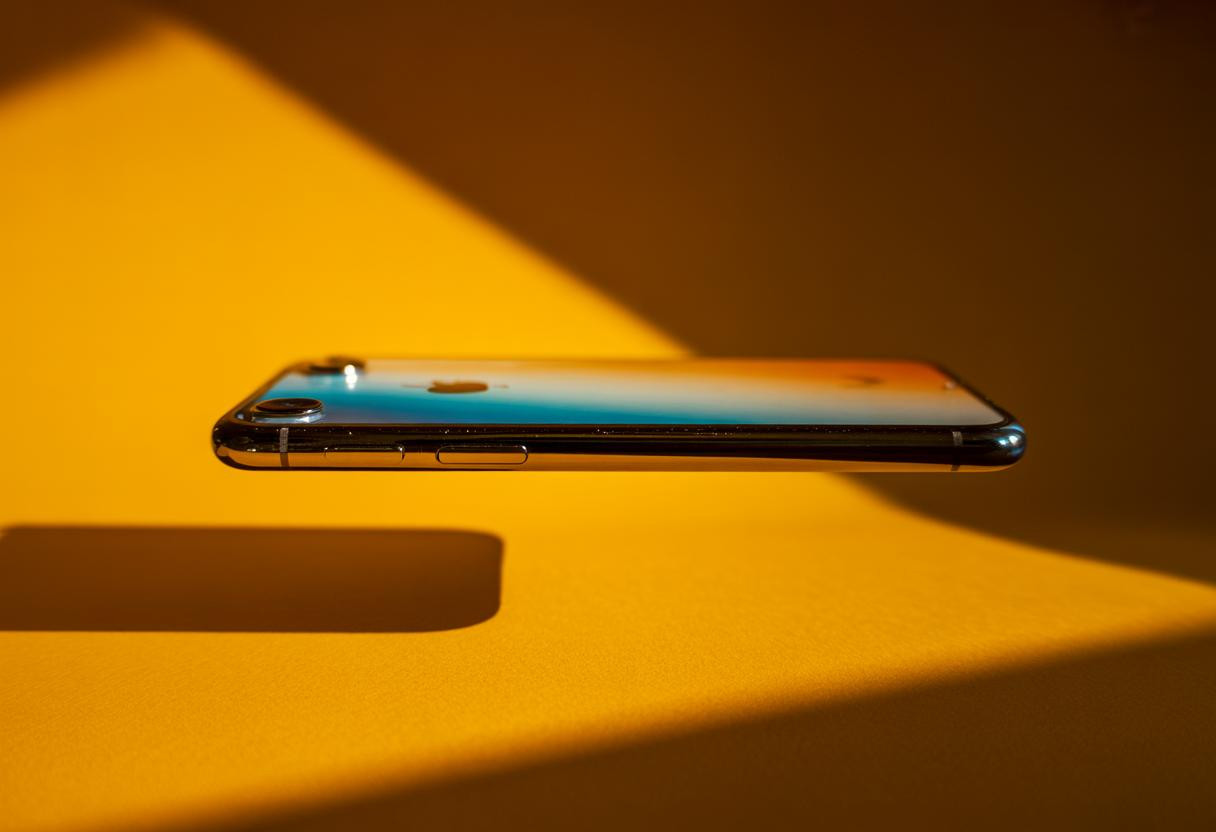Apple’s upcoming iPhone 17 Air could become the thinnest smartphone ever created at just 5.5mm thick, but this revolutionary design choice comes with surprising trade-offs that most tech enthusiasts haven’t considered. While everyone’s focused on the sleek aesthetics, the real story lies in how Apple is fundamentally reshaping the smartphone industry’s priorities—and what this means for your daily mobile experience.
The ultra-thin revolution reshaping smartphone expectations
The iPhone 17 Air represents Apple’s boldest design gamble since removing the headphone jack. Expected to launch in September 2025, this device will feature a 6.6-inch OLED display with ProMotion technology across all models, marking the first time Apple has democratized its premium display features.
What makes this particularly intriguing is the timing. While competitors like Samsung’s new 200MP camera phone reduces battery anxiety with 45W charging, Apple is prioritizing form over photographic prowess with a modest 12MP primary sensor using plastic lens elements.
The A19 chip powering this device will deliver flagship performance in an impossibly thin package, though 35W charging speeds suggest Apple is making calculated compromises elsewhere.
Hidden consequences of the thinnest design challenge
Battery life becomes the critical unknown
Here’s what nobody’s talking about: achieving 5.5mm thickness likely means significant battery capacity reduction. Current iPhone models already struggle with all-day usage for power users, and physics dictates that thinner phones mean smaller batteries.
Apple’s solution appears to involve more efficient processing and optimized charging, but real-world usage patterns may tell a different story. The 35W charging capability suggests Apple anticipates users will need to charge more frequently.
The ecosystem advantage becomes crucial
This is where Apple’s strategy reveals its brilliance. The iPhone 17 Air isn’t designed to compete on individual specs—it’s engineered to maximize ecosystem synergy with AirPods, Apple Watch, and Mac devices. When your phone dies faster, seamless handoff to other devices becomes invaluable.
Apple Intelligence 2.0 changes everything about interaction
The real innovation isn’t the hardware—it’s the upcoming Siri LLM integration planned for 2026. This advanced AI will enable human-like conversations and cross-app actions across over 100 applications, fundamentally changing how we interact with our devices.
Unlike cloud-dependent competitors, Apple’s approach prioritizes on-device processing for privacy, though this creates interesting parallels to ambitious projects like advanced AI systems that transform entire industries.
Personal context awareness means Siri will finally understand nuanced requests like “Send those photos from last weekend to John” without requiring specific folder navigation or app switching.
Strategic implications for your upgrade decision
The iPhone 17 Air targets a specific user profile: those who prioritize design aesthetics and ecosystem integration over maximum battery life or camera capabilities. This isn’t necessarily a compromise—it’s a philosophical shift.
Consider your usage patterns carefully. If you’re constantly switching between devices, value seamless design, and don’t mind more frequent charging, the Air could transform your mobile experience. However, power users requiring all-day battery life might find better value in traditional Pro models.
The pricing strategy remains unclear, but Apple’s positioning suggests this will occupy the premium mid-tier space, potentially replacing the Plus model entirely.
What this means for the future of mobile technology
Apple’s bold bet on ultra-thin design could trigger an industry-wide shift toward form-factor innovation over incremental spec improvements. Similar to how Nintendo revolutionized gaming with innovative form factors rather than pure power, Apple is betting that design elegance trumps specification wars.
The success of the iPhone 17 Air will likely determine whether 2025 becomes the year smartphones prioritize aesthetic innovation over battery capacity, fundamentally reshaping consumer expectations across the entire industry. Your upgrade decision isn’t just about one phone—it’s about supporting a vision for mobile technology’s future direction.
